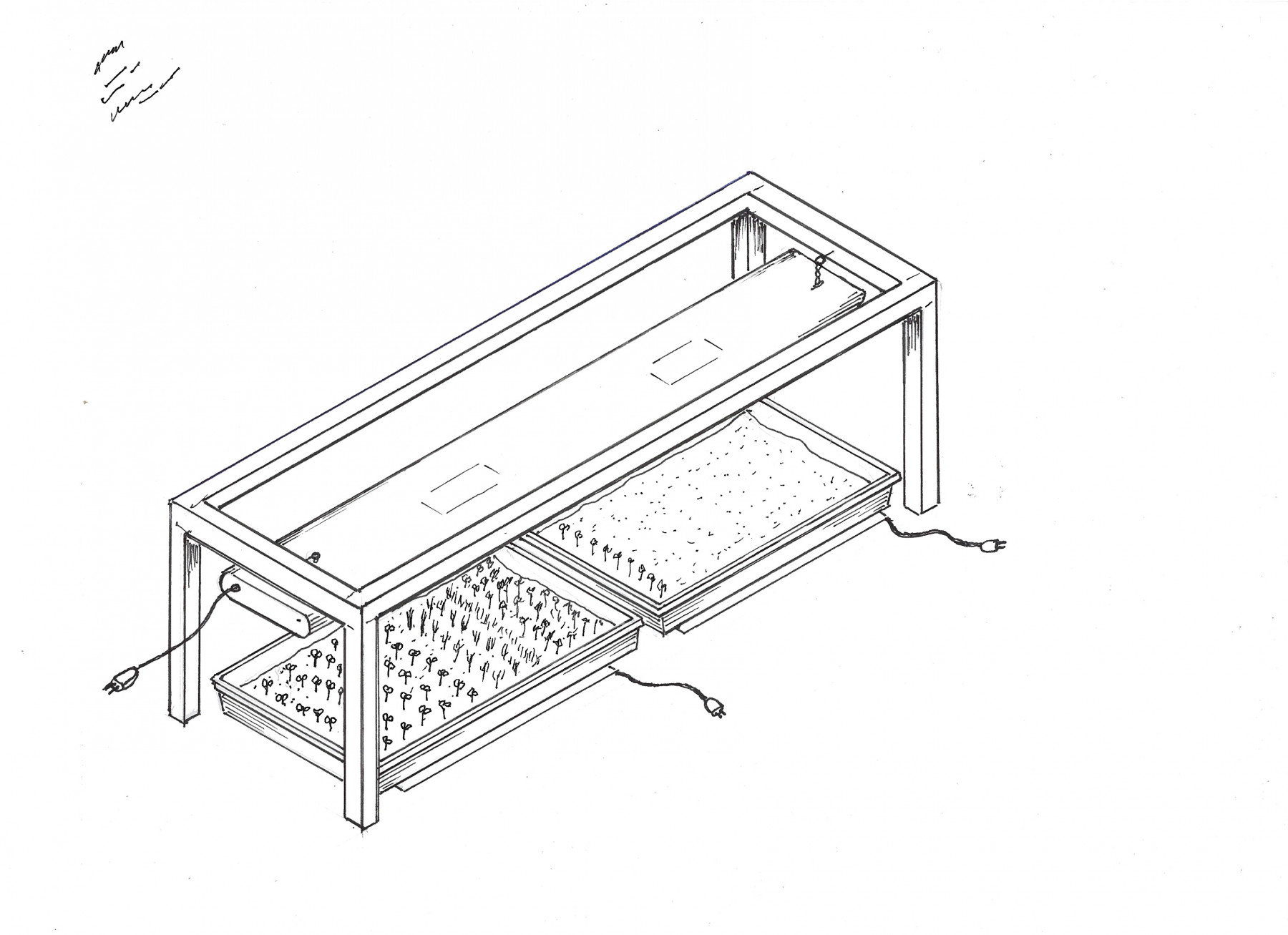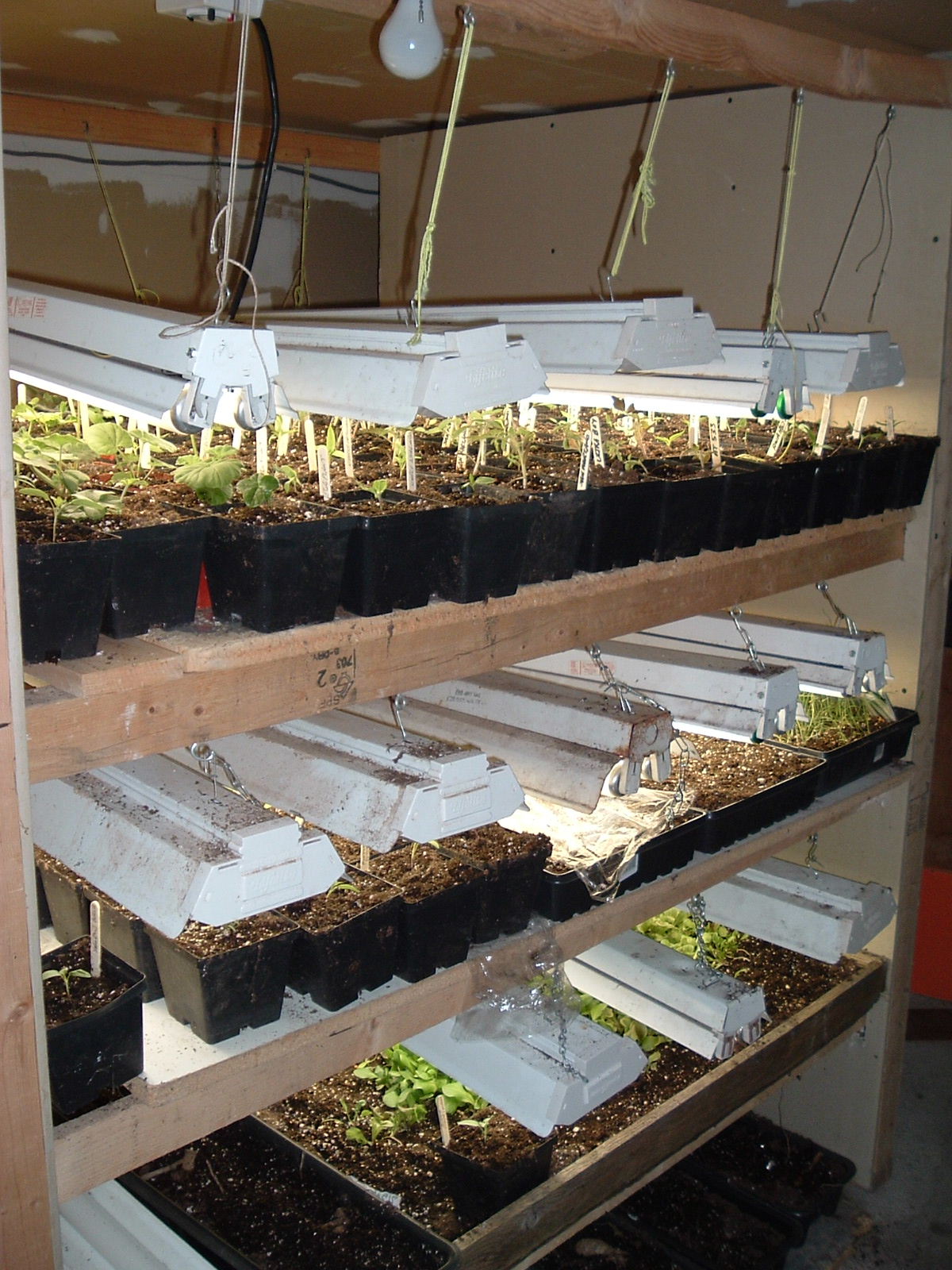
At this time of year, many greenhouse owners are getting ready to start seeds. I find that pepper seeds take up to three weeks to germinate, so I usually start them first, followed by eggplants, tomatoes, and flowers. However, there’s a problem starting heat-loving plants in a small greenhouse in late winter. The seeds of most such plants need a consistent temperature of between 65oF to 80oF in order to germinate. To heat a small greenhouse to that temperature for two to three weeks when outside temperatures are in the 20s and 30s can become quite expensive.
One solution used by a friend of mine is to buy a small, three-shelf, plastic greenhouse that measures 50 inches high, 27 inches wide, and 20 inches deep. (The cost is about $70.) He then set this mini greenhouse up on a shelf inside his larger greenhouse. Using a 20-inch-square, 45-watt, electric heat pad on the bottom of the mini greenhouse (cost around $50-$70) and LED grow lights over the three shelves with trays of seeds, he’s able to get germination even when the nights are very cold.
A similar idea is to build a small frame from ½-inch plastic pipe or 1-inch x 1-inch wood and cover it with polyethylene plastic to form a temporary grow space inside the main greenhouse as shown in figure 1. This structure can be placed anywhere it comfortably fits in the main greenhouse, such as on an unused workbench. Then all you need to put inside it are a heat pad and your seed trays. As the plants grow, they can be potted up and moved out of the plastic enclosure when nighttime temperatures inside the main greenhouse reach around 50oF or higher.

A more ambitious approach is to build a dedicated germination chamber, which can be located wherever it’s convenient for you. I built a simple one in my basement that allows me to start all manner of seeds in the warmth near the basement furnace. Not only does this eliminate going to the greenhouse on snowy days, but it also makes it easy to check daily on the plants’ progress. My chamber measures 4 feet x 4 feet to allow four 4-feet-long LED grow lights to be suspended side-by-side above the seed trays. This size base fits eight 11-inch x 22-inch seed trays, which enables many plants to be started at once. However, because I don’t typically start that many seeds together, I can turn on whatever number of lights that I require. In this setup, there’s no need for auxiliary heating because the basement is never cold, and the grow lights provide additional warmth when on. I leave the lights on for up to 14 hours a day to be sure the seeds germinate. For easy operation, the lights are on a timer. So all I need to do is water or mist the trays daily.
Over the years I’ve developed a standard schedule for starting my seeds here in Rhode Island. I begin with pepper seeds planted in mid-to-late January, which tend to germinate in February. At that time I start my tomatoes and eggplants. In March, peppers, eggplants, tomatoes, and some herbs, such as lemongrass, turmeric, and parsley, have all been transplanted into separate 4-inch pots, still within the germination chamber. (This is when the germination chamber gets more than a little crowded!) By mid-April, the plants are moved into the heated greenhouse where they will stay until mid-May when they can be transplanted into the garden under glass cloches. Because the wind is directly off the ocean, and sea temperatures are still in the mid-forties, the plants remain under the cloches until mid- to late-June. By adapting my growing strategy to the area in which I live, I find I can get a good harvest all summer long and often well into November.










